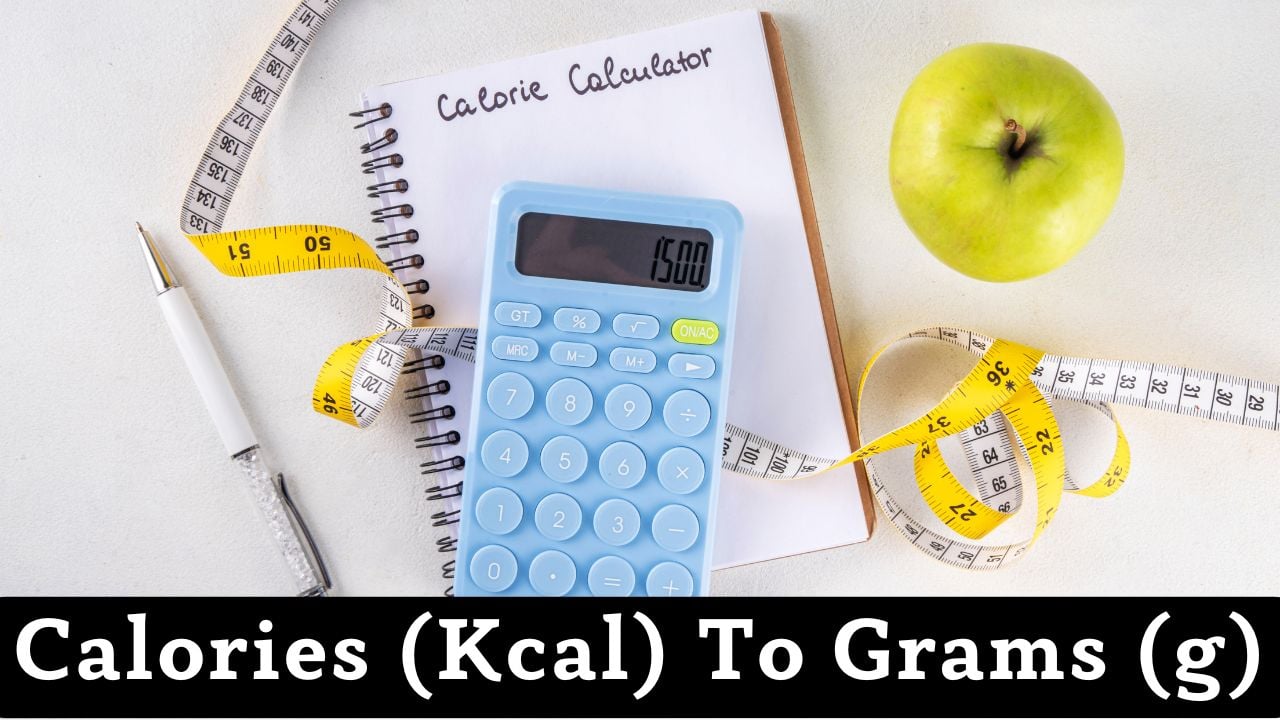Calories To Grams Calculator
Convert calories to macronutrient grams or ounces instantly
Macro Distribution
Daily Recommended Values:
- Carbs: 225-325g per day
- Protein: 46-56g per day
- Fat: 44-77g per day
*Based on a 2000 calorie diet

How Many Grams in Your Calories
Ever wondered how many grams of food make up your calorie goals? Let's explore the science of converting calories back to food portions! According to nutrition studies, understanding this relationship helps you plan better meals and achieve your dietary goals.
Calorie Basics 🔍
Your food's calories come from three main nutrients (energy research): proteins, carbohydrates, and fats. Each nutrient has a specific calorie-to-gram ratio, making it easy to plan your portions!
Making It Simple 📊
Recent metabolic studies help us understand how to convert calories back to food portions. Let's break down how many grams you get per calorie for each nutrient!
Converting Calories to Grams
Essential Nutrients
| Nutrient Type | Grams per 100 Calories | Common Sources |
|---|---|---|
| Fats | 11.1 grams | Oils, nuts, avocados |
| Proteins | 25 grams | Meat, eggs, legumes |
| Carbohydrates | 25 grams | Bread, rice, fruits |
| Fiber | 50 grams | Vegetables, whole grains |
| Alcohol | 14.3 grams | Alcoholic beverages |
Real Food Examples
| Target Calories | Protein (25g/100cal) | Carbs (25g/100cal) | Fat (11.1g/100cal) | Total Grams |
|---|---|---|---|---|
| 300 calories | 75g protein | 75g carbs | 33.3g fat | 183.3 grams |
| 500 calories | 125g protein | 125g carbs | 55.5g fat | 305.5 grams |
| 1000 calories | 250g protein | 250g carbs | 111g fat | 611 grams |
Smart Portion Tips:
Quick Conversion
For proteins and carbs: divide calories by 4 to get grams. For fats: divide by 9.
Balance Your Plate
Aim for a mix of nutrients: 40-50% carbs, 25-35% protein, and 20-30% fats.
Portion Control
Use a food scale for accuracy when measuring your portions.
Track Smart
Use our macro calculator for personalized portion planning!
Understanding Food Portions
Converting Calories to Food
According to portion research, here's what you need to know:
Key Points to Remember:
- Proteins: 4 calories per gram (25g per 100 calories)
- Carbohydrates: 4 calories per gram (25g per 100 calories)
- Fats: 9 calories per gram (11.1g per 100 calories)
- Mixed Foods: Calculate each nutrient separately
Making It Work for You
Here's how to use this information effectively:
- Start with Calories: Determine your calorie needs first
- Split by Macros: Divide calories among proteins, carbs, and fats
- Convert to Grams: Use the conversion ratios above
Remember
Your needs may vary based on:
- Activity level
- Fitness goals
- Body composition
- Dietary preferences
- Health conditions
FAQs
Get expert answers to common questions about converting calories to food portions! Learn how to accurately measure your nutrients and understand portion sizes for better meal planning.
How do I convert calories to grams of protein? 🥩
According to nutrition research, divide the calories by 4 to get grams of protein. For example, 200 calories ÷ 4 = 50 grams of protein. This is because protein provides 4 calories per gram.
How do I calculate grams of fat from calories? 🥑
Metabolic studies show that fats provide 9 calories per gram. To find grams of fat, divide the calories by 9. For instance, 180 calories ÷ 9 = 20 grams of fat.
What about converting calories to carbohydrate grams? 🍚
Like protein, carbohydrates provide 4 calories per gram (energy research). Divide calories by 4 to get grams of carbs. Example: 400 calories ÷ 4 = 100 grams of carbohydrates.
How do I calculate portion sizes from calories? ⚖️
First, determine the macronutrient ratio of your target calories. Then divide each calorie amount by its respective conversion factor: 4 for protein/carbs, 9 for fats. Use our portion calculator for easy calculations.
Why do different foods with same calories have different weights? 🤔
According to food science research, this occurs because different nutrients have different energy densities. Fats (9 cal/g) are more energy-dense than proteins or carbs (4 cal/g), resulting in different weights for the same calories.
How accurate are calorie-to-gram conversions? 📊
While the basic conversion factors are standardized (4-4-9 for protein-carbs-fat), actual food absorption can vary by ±20% due to factors like food preparation, digestibility, and individual metabolism.
How do I measure mixed food portions? 🥗
For mixed foods, calculate each macronutrient separately using their respective conversion factors, then add the grams together. Consider using a food scale and nutrition labels for accurate measurements.
What about fiber and alcohol calories to grams? 🍷
Fiber provides 2 calories per gram (divide calories by 2), while alcohol provides 7 calories per gram (divide calories by 7). However, these calculations are mainly used in specialized dietary planning.
How do I plan meals using calorie-to-gram conversions? 📝
Start with your total calorie goal, divide it among macronutrients (e.g., 40% carbs, 30% protein, 30% fat), then convert each to grams. Use these amounts to portion your meals throughout the day.

Manish is a NASM-certified fitness and nutrition coach with over 10 years of experience in weight lifting and fat loss fitness coaching. He specializes in gym-based training and has a lot of knowledge about exercise, lifting technique, biomechanics, and more.
Through “Fit Life Regime,” he generously shares the insights he’s gained over a decade in the field. His goal is to equip others with the knowledge to start their own fitness journey.
